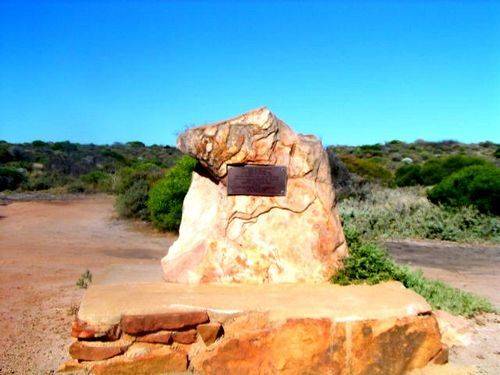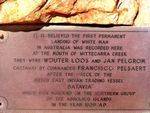
Home » Themes » Landscape » Exploration
"Batavia" MutineersPrint Page 
The cairn marks the spot where two mutineers were set ashore from the "Batavia". They are believed to be Australia`s first permanent landing by Europeans.
In June 1629 Fransisco Pelsaert wrecked the Batavia on the De Houtman Abrolhos Islands and the mutiny of the Batavia followed. After sailing north for help, Pelsaert returned in the ship Sardam and rescued the survivors of the Batavia mutiny. In November Wouter Loos and Jan Pelgrom De Bye, two of the mutineers were taken in a small boat to the mouth of the Hutt River on the mainland and were left with equipment to fend for themselves as punishment for their role in the mutiny. They were never heard of again.
Location
| Address: | Port Gregory - Kalbarri Road, Wittecarra Creek, 4.2 kilometres from Kalbarri, Kalbarri, 6536 |
|---|---|
| State: | WA |
| Area: | AUS |
| GPS Coordinates: | Lat: -27.741389 Long: 114.147778 Note: GPS Coordinates are approximate. |
Details
| Monument Type: | Monument |
|---|---|
| Monument Theme: | Landscape |
| Sub-Theme: | Exploration |
| Approx. Event Start Date: | 1629 |
| Approx. Event End Date: | 1629 |
Dedication
It Is Believed The First Permanent
Landing Of White Man
In Australia Was Recorded Here
At The Mouth Of Wittecarra Creek.
They Were WOUTER LOOS And JAN PELGROM
Castaway By Commander FRANCISCO PELSAERT
After The Wreck Of The
Dutch East Indian Trading Vessel
"BATAVIA"
Which Ran Aground On The Northern Group
Of The Abrolhos Islands
In The Year 1629 A.D.






